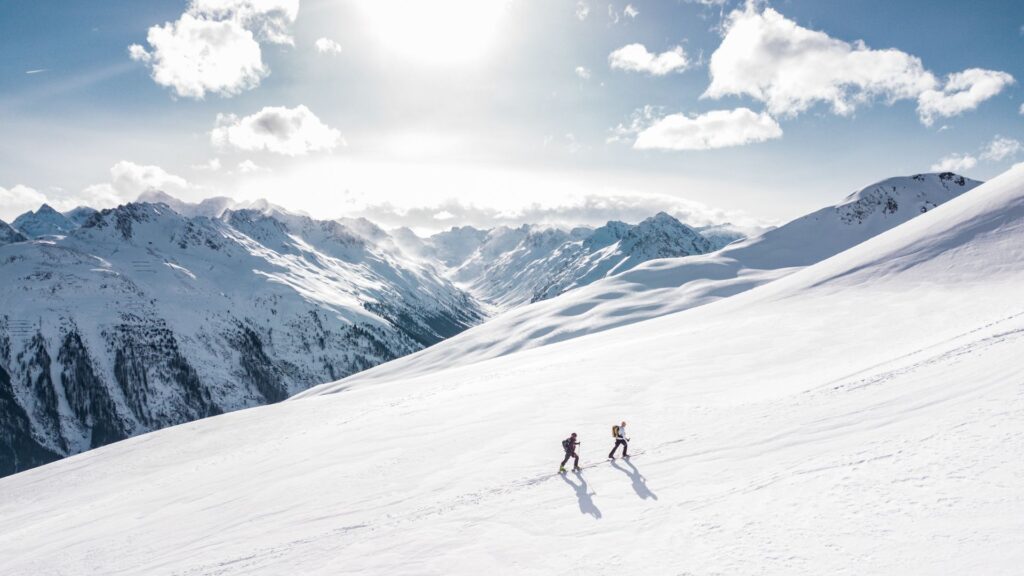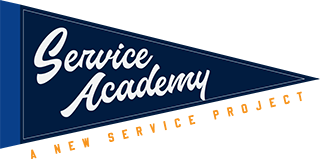
Have you ever considered how learning to teach a skill could make you a better leader and changemaker?
We’ve just completed our 10-week ski instructor training program in the Swiss Alps, and throughout this experience, we’ve been thinking a lot about what it means to be a good mentor and a good mentee — and how these two questions overlap.
That’s one big reason we jumped at this opportunity.
Ski instruction might seem out of place in a gap year focused on social impact. But this program wasn’t just about skiing — it was about discovering the art of teaching and learning, skills that are fundamental to creating positive change in the world.
Here’s why this training was so valuable:
- It served as a microcosm for developing crucial skills in social impact work
- It allowed us to experience both sides of the mentorship equation
- It pushed us out of our comfort zone, fostering personal growth
This experience encompassed a broader understanding of complex challenges, communication across diverse groups, collaboration, and leadership. As part of our gap year journey, we’re grateful for the chance to have taken the next step forward in our commitment to purposeful growth, adventure, and self-discovery, not to mention spending time in the Alps!
Embracing the Duality of Mentee and Mentor
Our training placed us in a unique position: we were simultaneously students learning to ski better and future instructors learning to teach. This duality offered invaluable insights into effective leadership and mentorship.
Becoming Purposeful Mentees
As we stepped into our role as students and mentees, we weren’t just learning ski techniques; we were studying the art of instruction itself to become more effective teachers, mentors, and leaders.
Here’s how we focused our learning:
- Active Observation: Studying how our instructors broke down complex movements, explained concepts, and adapted their teaching styles to different learners.
- Reflective Practice: Daily reflection on our experiences, a practice that helped internalize the day’s lessons and our goal of being present and mindful. What teaching methods resonated with us? What challenges did we face? How did our instructors help us overcome them?
- Peer Learning: Engaging in discussions with fellow trainees, sharing insights, and practicing explaining concepts to each other.
- Embracing Feedback: Actively seeking and applying constructive criticism from our instructors, a practice essential for our development as both skiers and future instructors.
With these ideas in mind, we actively pursued our goal of becoming the best mentees we could be. The lessons we’ve learned have given us an amazing opportunity to reevaluate our foundational beliefs about what it means to be a learner, and we’ll take those lessons with us far beyond this program.
Question: What strategies do you use to make the most of learning experiences?
Developing as Intentional Mentors
When we think back to the best teachers we’ve ever had, they all have certain skills in common. Throughout our own foray into teaching, their collected, communicative, and engaging styles were at the forefront of our minds.
As we experienced the shift from mentee to mentor, these are the lessons we kept in mind:
- Empathy in Action: Understanding the frustrations and fears of new skiers required us to be thoughtful about how we handled group instruction with a range of confidence and learning skills.
- Customized Communication: Adapting our teaching styles to suit different learners allowed us to engage with diverse student groups.
- Safety and Trust: Ensuring student safety in an effort to build their confidence was a delicate balance.
- Continuous Improvement: Becoming an effective mentee, mentor, teacher, or leader takes opportunity and time, so we are committed to making the most of this unique program.
Parallels with Social Impact Work
The skills we developed on the slopes have direct applications in our social impact work:
- Meeting People Where They Are: Just as we adapted our teaching to each skier’s level, effective social impact requires understanding and addressing community needs in their current state.
- Root Cause Analysis: Learning to diagnose and correct skiing technique mirrors the process of identifying and addressing root causes of social issues.
- Relational Leadership: Building trust and rapport with ski students parallels the collaborative relationships needed in community work.
- Creating Safe Spaces: Fostering an environment where skiers felt safe to take risks reflects the importance of creating safe spaces for vulnerable communities.
We’ve explored the powerful intersection of a hybrid student and teacher role and learned all of these amazing lessons we hoped to.
While we didn’t know what we stood to learn when we began, we did have an idea of the people we wanted to be afterward. So, as we alternated between these roles, we kept these ideas in mind:
- The Power of Perspective: Experiencing both sides of the instruction equation gave us a holistic view of how the way we learn influences the way we teach (and vice versa), a powerful leadership skill.
- The Cycle of Growth: Each time we struggled with a new technique as students, we gained insight into how to encourage and better explain techniques as instructors.
- The Importance of Humility: Being a student reminded us of the vulnerability of learning something new, and this humility made us more patient and understanding with ourselves and our students.
We’re excited about how this experience complements our Himalayan mountaineering course and the active mountain safety lessons we learned there, as well as how it builds towards our gap year “capstone” internship in South Africa.
This experience has reinforced our belief in experiential learning as a powerful tool for personal growth and community building.
What’s Next?
As we reflect on our time in the Swiss Alps, we’re filled with gratitude for the challenges and growth we experienced. We’ll be sharing more insights from our gap year journey, so stay tuned to hear about our triumphs, challenges, and everything in between!
We’d love to hear from you:
- Have you ever been in a position where you were both learning and teaching simultaneously?
- How do you think the skills learned in ski instruction could apply to other areas of life or work?
Share your thoughts in the comments below or reach out to us directly. Your insights could help shape our approach as we continue our gap year adventure!
Remember, whether you’re on the bunny slopes or black diamonds of life, there’s always something new to learn and share. Here’s to embracing the duality of mentee and mentor in all aspects of life!
— Ryan & Thomas Growney
About Our Gap Year Journey
We’re Ryan and Thomas Growney, twin brothers and co-founders of Service Academy.
After graduating from St. George’s School in Rhode Island, we’ve embarked on a gap year to explore how different cultures approach problem understanding, community engagement, service, and social innovation.
Our journey will take us to various countries, including South Africa, where we’ll participate in the Tilting Futures program, and the Himalayas, where we’ll be joining the NOLS for a high-altitude mountaineering challenge. Throughout this year, we aim to challenge our assumptions, broaden our perspectives, and gather insights that will help us enhance our approach to social impact back home.
Ryan is particularly interested in scaling service initiatives to develop young leaders, while Thomas focuses on the personal connections and community belonging that service creates. By sharing our experiences, we hope to contribute to a broader dialogue about service, mentorship, community engagement, and cross-cultural learning.
We invite you to follow along on our journey, engage with our reflections, and share your own insights about service in diverse contexts.
Together, we can work towards creating more meaningful and impactful youth service ecosystems that benefit both young people and their communities.
